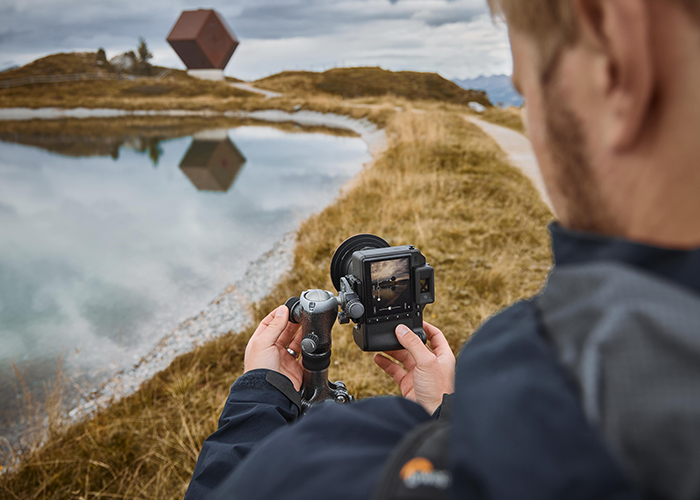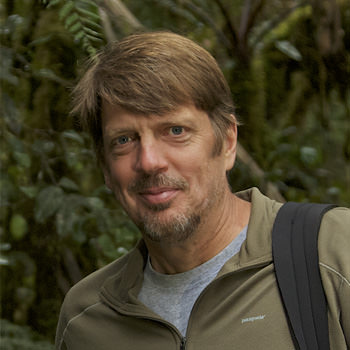THE GITZO TRAVELER TRIPOD MEETS THE NEW HASSELBLAD X2, TAKING LANDSCAPE PHOTOGRAPHY TO A PREMIUM LEVEL.
17.11.2022 | Reading time: 10 minutes
Author: Albrecht Voss
Photography, for me, is an invitation to explore my environment. Since I was 15 years old, I have seen the world through a lens. This perspective makes me appreciate small, inconspicuous moments and makes me take great strains to find unique motifs. Hikes through the Alps are my favorite excursions in search of new motifs. Here I have to work out my pictures for my photo series. I always travel by car in the morning and then hike through the midday and afternoon to my destination, where I usually stay overnight. This way, I reserve the time with the most beautiful light for photography for my current photo series. I traveled over two weeks from the Julian Alps in Slovenia through Italy, Austria, and Switzerland back to my home country, Germany.
New Hasselblad X2D
As a Hasselblad master photographer, having the right equipment is essential to being comfortable, even in adverse conditions. On my last trip, I had the chance to work with the new Hasselblad X2D and the three new XCD cameras with 38 mm, 55 mm, and 90 mm lenses. This combination is fantastic for landscape photography because the camera and lenses are ultra-compact and very lightweight. At the same time, they offer the highest level of image quality, sharpness, and dynamic range that you can get on the market, so I'm 100% sure that the effort during shooting will be rewarded with top-notch image results. The perfect companion for this camera is the Gitzo Traveler Series 2 tripod. It fits very compactly in my hiking backpack and is very light, weighing only 184 kg. At the same time, with my 186 cm height, I can comfortably use the tripod while standing. This is a real convenience, especially when you work with the tripod almost every day for years. Aside from the gain in comfort from the tripod, I'm just happy every time I hold a Gitzo product in my hand. The haptics and finish feel great and match Hasselblad's premium build quality perfectly. Both systems make me feel like I can rely on my equipment without exception for my night images. I prepare the photos at dusk to get a good look at the composition, and then leave the tripod until the wee hours of the morning. On many nights during my tour, the moon would set at midnight and the sky would clear in the morning around 3 a.m. I then had a clear view of the stars. The Gitzo tripod stood on the mountaintop the whole night; sometimes in storms, rain, or frost, it didn't fall over once, and even the operation in sub-zero temperatures ran flawlessly. When the wind became very strong, I filled a bag with stones and hung it on the tripod as additional weight. This is a very effective method to stabilize the tripod and a use case that many people don't consider. However, when it comes to the maximum load weight of the tripod, be aware of what you choose as it should be able to support any additional weight.
Sustainability in landscape photography
In my mountain images, I always try to find compositions in which the landscape appears untouched, but anyone who has ever been to the Alps knows that you can find human traces everywhere, especially since tourism changes the landscape on a large scale. Ski slopes, lifts, and restaurants can be found on almost every mountain in the Alps, which helps many people enjoy nature in all its magnificence with the comfort they are used to. At the same time, this infrastructure takes away much of the experience with my photography. I want to advocate for sustainable tourism concepts and see more mountain hut owners and communities rely on regenerative energy concepts for their huts. Modern architecture with natural materials blends in with nature in the Alps instead of sticking out of it. These are good approaches that I address in my photo series, "Modern Alpine Architecture: Why I Love Landscape Photography." Photography in the mountains combines all my passions. Photography, nature climbing, and delicious food in the Alps are a great change from a busy everyday life as a commercial photographer. Even though getting up early going on long tours and fighting the elements is very exhausting, these photo tours give me more energy than they take away, as there's nothing like the first warm rays of sunshine on your face after a cold night behind the camera.




"Many of these species are endangered, mostly due to the loss of suitable habitat as rainforest areas shrink across the region.
But as long as we appreciate the value of maintaining the full diversity of living species on earth, and places like Gunung Palung can remain protected, then I am optimistic about the future."


Tim Laman
Tim Laman is a field biologist and wildlife photojournalist. Tim first went to Borneo in 1987 and his pioneering research in the rain forest canopy led to a PhD from Harvard and his first National Geographic article in 1997. He has pursued his passion for exploring wild places by becoming a regular contributor to National Geographic magazine where he has published 23 feature stories.


























